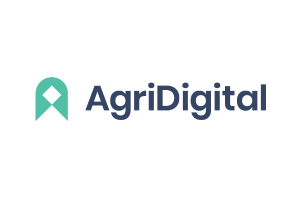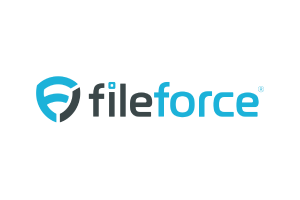Microsoft Workloads on AWS
Why customers are moving from .NET Framework to .NET Core on AWS
Farmers using the AgriDigital app almost certainly don’t care what infrastructure AgriDigital runs behind-the-scenes. But they do care about the 50 percent performance boost AgriDigital got by switching from Microsoft Azure (Azure) to Amazon Web Services (AWS). AgriDigital, an Australian technology startup that wants to simplify the world’s agricultural supply chain, was looking to break free from their Microsoft-centric technology past to embrace more open source innovation. The key to enabling that transformation was a move from Microsoft Windows-centric .NET Framework to open source and platform-agnostic .NET Core.
 While many companies want to emulate AgriDigital’s .NET Core success, some worry about the learning curve associated with the switch. Perfectly rational. However, for developers who want the best of open source innovations (in .NET and beyond), .NET Core is the only answer.
While many companies want to emulate AgriDigital’s .NET Core success, some worry about the learning curve associated with the switch. Perfectly rational. However, for developers who want the best of open source innovations (in .NET and beyond), .NET Core is the only answer.
So how can developers embrace .NET Core with minimal pain and maximum benefit? AWS provides some answers.
Acclimating to .NET’s future
Moving onto .NET Core might seem daunting to experienced .NET Framework developers. However, that experience should serve them well. After all, most of the newer .NET Framework APIs have been implemented in .NET Core. The trick is picking up the differences between how configuration and deployment differ between the two, which is relatively straightforward.
 How straightforward? For AgriDigital, who were running a newer version of .NET Framework, the move required no significant training. According to Dominik Moreitz, head of engineering at AgriDigital, “We were able to migrate our .NET Framework environment very easily [to .NET Core], without needing to re-skill our .NET developers.” In fact, keeping .NET as the common denominator while modernizing makes the rest of the transition to innovative open systems, like Linux, much easier. As Fileforce, a Japanese provider of cloud file storage and document management services, discovered, building with .NET Core “made our software portable to other open source platforms, such as Linux,” says Fileforce CEO Aram Sargsyan.
How straightforward? For AgriDigital, who were running a newer version of .NET Framework, the move required no significant training. According to Dominik Moreitz, head of engineering at AgriDigital, “We were able to migrate our .NET Framework environment very easily [to .NET Core], without needing to re-skill our .NET developers.” In fact, keeping .NET as the common denominator while modernizing makes the rest of the transition to innovative open systems, like Linux, much easier. As Fileforce, a Japanese provider of cloud file storage and document management services, discovered, building with .NET Core “made our software portable to other open source platforms, such as Linux,” says Fileforce CEO Aram Sargsyan.
.NET Core opens up cost savings and increased productivity
Of course, there’s also some learning required for Windows developers to pick up Linux. But that learning pays dividends in the shape of cost savings and productivity gains.
With respect to cost savings, Fileforce turned to AWS to save money in two ways. Sargsyan says the company immediately gained 30 percent cost savings by moving to pay-as-you-go Amazon Elastic Compute Cloud (Amazon EC2) Linux instead of paying for pricey Windows licenses. The company can then reinvest that 30 percent cost savings into their development team to serve “more customers while using the same resources.” For AgriDigital, moving off of Microsoft SQL Server (SQL Server) and Windows yielded a “definite[] reduc[tion in] licensing costs,” but the cost savings went further. Before, AgriDigital’s “.NET [Framework] architecture was monolithic and not built to scale.” The move to .NET Core offered them a path to a microservices-based architecture that has allowed them to “scale to meet our compute needs whenever we need to” rather than keep paying for unused but still running instances.
The other cost savings are better described as a productivity multiplier derived from moving from an on-premises model to the AWS Cloud model. While Fileforce had been running their .NET Framework and SQL Server-based applications in an on-premises environment, this imposed significant delays, according to Sargsyan.“It would typically take us up to three months to get new features out, because we had to spend time procuring and provisioning servers and we didn’t have development automation in place,” Sargsyan says. Now, he continues, Fileforce has automated 90 percent of their code deployment and can push code to production every week instead of once a month. “We often have customers asking us for new features, and we can deliver those features in weeks instead of months because of the agility we get by running on AWS. We can differentiate ourselves by deploying software updates and features much faster.”
The right cloud for the job
Customers like AgriDigital are finding that such benefits are unique to AWS. Though AgriDigital started with Microsoft Azure for running their .NET Framework applications, they bumped into serious problems: “We had started having more reliability issues, with increasing application downtime,” notes Moreitz. “Even a few minutes of downtime can negatively impact our customers, such as truck drivers who use the application to track delivery schedules during harvest time. And there’s a financial impact, too. If invoices and payments are not processed quickly enough, people don’t get paid on time.” Though the company considered other providers, Moreitz says AWS “provided more reliability and scalability” while delivering strong .NET Core performance.
So, should you consider moving from .NET Framework to .NET Core? For AgriDigital and Fileforce, that answer is a resounding “Yes.” Taking advantage of cloud native technology, modern architecture (like microservices and containers) allows customers to lead with innovation. As AgriDigital, Fileforce, and other companies have found, the best place for building that .NET Core future is on AWS. And whether you choose to build on .NET Framework or .NET Core, all of your .NET workloads can benefit from the AWS Cloud.
More to come
Please continue to join me as I regularly highlight different companies as they move workloads onto AWS. As you do, I hope you’ll also ask the question, “What’s your plan for moving off Windows Server?” Or off Oracle? Or whatever old-guard technology keeps you from modernizing to better care for your customers?
Let AWS help you assess how your company can get the most out of cloud. Join all the AWS customers that trust us to run their most important applications in the best cloud. To have us create an assessment for your Oracle applications or all your applications, email us at WhatsYourModernizationPlan@amazon.com, and please consider joining the conversation using the #WhatsYourModernizationPlan hashtag.
To learn more on modernizing Windows Server or SQL Server, visit our Windows on AWS page. For more information on .NET on AWS, visit our .NET on AWS page.